Technical Support to States
How can EPA research help states, Tribes and communities address their on the ground environmental challenges?
EPA researchers provide technical and scientific support as needed to EPA’s On-Scene-Coordinators, other responders, and state environmental agencies in times of crisis. Whether it’s selecting the appropriate analytical method or the right technology to decontaminate a water system, EPA’s researchers are able to assist as needed.
EPA compiles these stories to illustrate how our collaborative work has supported our partners’ efforts to protect human health and the environment. These stories provide examples of how state environmental agencies and public health departments are using EPA research results, decision support tools, and technical solutions to address a wide variety of environmental issues. Below are stories on EPA's support on homeland security events and emergency response-related efforts.
More stories can be found on the EPA Research to Support States story map. View all Research Partner Support Stories.
On this page:
- Lead Contamination Support in Michigan
- Asbestos in Montana
- B. pseudomallei in Louisiana
- Indulin AA-86 in Texas
- Water Distribution System Analysis in Ohio, Michigan, Colorado, Kentucky, New York & Florida
- Radiological Cleanup in Ohio, Navaho Nation, Canada, United Kingdom & New York
- Anthrax Cleanup in California, New York, Virginia, Massachusetts & District of Columbia
- Railcar Decontamination in California
- Ebola Support in New York, Maryland & Texas
- Sampling Operations Following Biological Incidents in NYC
- Disposal of Contaminated Carcasses Following an Agricultural Emergency in North Carolina
- Response to Ricin Contamination in multiple states
Lead Contamination Support
Partner: City of Flint, Michigan

Challenge: Lead contamination in Flint water system
Resource: Technical support, computer modeling and sampling equipment
In EPA, reachback is a process for obtaining services and technical support from parts of the agency that are not involved in the on-site emergency response activities. It extends the capabilities of the on-site staff and is scalable to suit the demands of the response. EPA’s Office of Research and Development’s (ORD) created the Reachback for Emergency Response (RACER) effort to provide ready access to all of ORD’s technical resources during an environmental incident. RACER was used to coordinate some of the technical support needs identified by the Agency’s responders during the response to the Flint drinking water crisis.
ORD also participated on the EPA Region 5 Flint Safe Drinking Water Task Force that was established in the fall of 2015. The Task Force continues to provide technical assistance to the City of Flint as it works to rectify the problems that were created when the City changed its water supply from the City of Detroit (Lake Huron) to the Flint River. The City reconnected to the City of Detroit supply in October 2015 and is anticipating connecting to the supply provided by the Karegnondi Water Authority in the future.
Asbestos Exposure and Forest Fires
Partner: State of Montana
Challenge: Asbestos exposure following forest fires
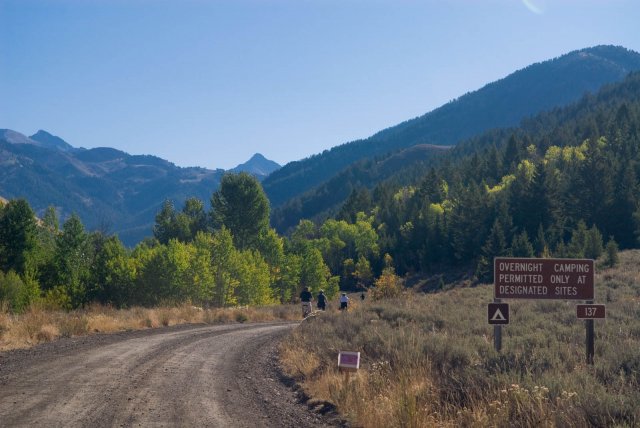
Resource: Computer modeling
Libby amphibole asbestos (LAA) has been found to co-occur with the vermiculite ore that was mined in Libby, Montana, starting in the 1920s. Due to the presence of asbestos, additional concerns have been raised about the potential for forest fires near the Libby Asbestos site to spread asbestos fibers, exposing firefighters and those living adjacent to the Libby site.
To address this potential health hazard, EPA researchers, in collaboration with Region 8 (Mountains and Plains), provided technical support to Montana Department of Environmental Quality EQ in assessing the health risks associated with potential forest fires near the Libby Asbestos site in Montana. Specifically, researchers conducted experiments to understand the potential asbestos emissions, and Region 8 used these data in a model to assess whether these emissions would result in potential exposures. To obtain emissions data, researchers first burned forest floor material from a portion of the Libby Asbestos site, simulating a forest fire. During these simulated burns, particulate matter and gaseous emissions were measured and samples of the ash were analyzed to determine whether these samples contained asbestos. These data suggested that only a small fraction of the asbestos in the forest floor material was released into the gas phase.
EPA Region 8 then used these data, along with direct measurements of asbestos in the forest floor at the Libby site, and estimated combustion and meteorological conditions in a model to estimate potential asbestos exposures under various scenarios. Because of these modeling efforts, EPA was then able to provide Montana DEQ with the range of potential exposures for these scenarios. In addition, EPA is now able to model forest fires when they do occur to more accurately estimate exposures and health risks to firefighters and to the surrounding communities.
Read the synthesis report: Emissions of Amphibole Asbestos from the Simulated Open Burning of Duff from Libby, Montana.
B. pseudomallei Outbreak
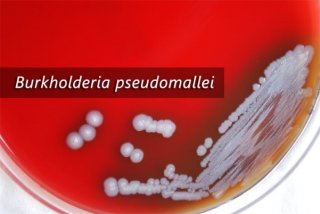
Partners: Tulane University, State of Louisiana
Challenge: Burkholderia pseudomallei outbreak
Resources: Sampling support
In March of 2015, the deadly bacteria, Burkholderia pseudomallei, causative agent for the disease melioidosis, was released from a high-security laboratory at Tulane University’s Primate Research Center. Burkholderia pseudomallei is capable of thriving in soil and water. Primates that were exposed to the bacteria were housed in outdoor cages with gravel bottoms. There is no standard protocol for sampling and analyzing gravel for Burkholderia. EPA researchers were contacted to provide technical support to the state and EPA region on sampling and analysis and proper management of potentially contaminated wastewater.
Indulin AA-86 Contamination
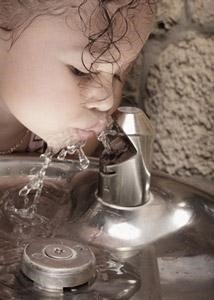
Partners: State of Texas, City of Corpus Christi
Challenge: Indulin AA-86 contamination in Corpus Christie’s water supply
Resources: Determine health risks and action level
EPA researchers responded to a request for assistance from Region 6 in Texas after an asphalt emulsifying agent, Indulin AA-86, contaminated Corpus Christie’s water supply. It was a chemical that most were unfamiliar with, and toxicity information along with treatment options to remove this chemical from water was lacking. EPA provided assistance early in the response concerning decontamination approaches that might be suitable for use in purging the system of the contaminant. EPA scientists also helped the region dissect and understand the toxicity and possible risks associated with ingestion of water contaminated with Indulin AA-86 and the water soluble salt from the product. Together with Texas state agencies, EPA researchers established a health-based action level for the contaminant and supported an immediate need by the region, the state, and the city to protect public health.
Real-Time Water Distribution System Analysis
Partners: Ohio, Michigan, Colorado, Kentucky, New York, Florida
Challenge: Simulating and monitoring conditions in drinking water utilities & distribution systems
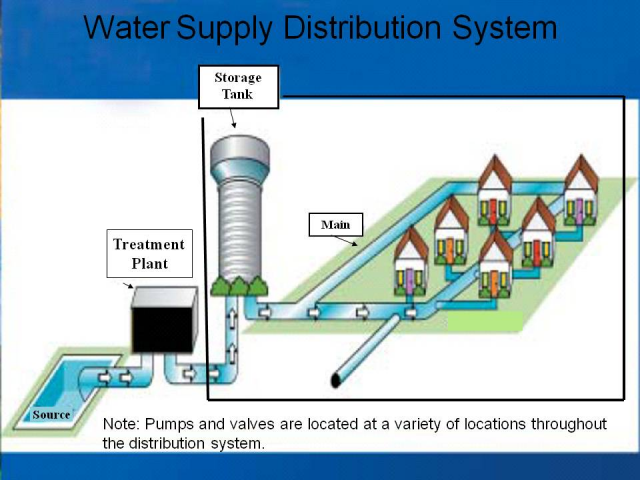
Resources: Computer tools, technical assistance, and field support
EPA developed EPANET-RTX to allow utilities to link their raw Supervisory Control and Data Acquisition (SCADA) data with their EPANET distribution system hydraulic model to evaluate conditions in the system in real time. The development of real-time analytics can provide utilities with the necessary tools to enhance system operations including emergency response and improved operations, e.g., better pressure management, leak detection and water quality. EPANET-RTX has been tested or demonstrated in several locations including Ohio, Colorado, Florida, Kentucky, and Michigan.
To make real-time monitoring available to small systems that lack powerful computing capability, RTX:LINK provides access to the SCADA data through mobile applications and desktop computers. RTX:LINK software provides simple and secure access to key water utility operational data streams, using web-based dashboards for trending and alerting. With RTX:LINK drinking water utilities have the ability to better understand water quality and operational conditions in their system at any point in time.
RTX:LINK software is easy to install on popular SCADA systems and has been tested in several locations. RTX:LINK was piloted in the Milford, Ohio, water system, where it has provided 24-hour access to current and historical tank levels, pump statuses and distribution system flows via mobile or desktop devices.
RTX:LINK was also tested in the city of Flint, Michigan, where it was used to provide the same benefits as those in Milford along with a continuous, real-time understanding of water age. Using this technology has helped these water systems better understand how to optimize operations, e.g., where and how to decrease water ages and identify low-pressure areas, and help predict available pressures for firefighting should disruptions occur in the distribution system.
Read the final report: Deployment of Real-Time Analytics and Modeling at the City of Flint, Michigan, Water System.
Wide-Area Cleanup Following a Radiological Incident
Partners: Ohio, Navaho Nation, Canada, United Kingdom, New York
Challenge: Cleaning up after a wide area radiological incident
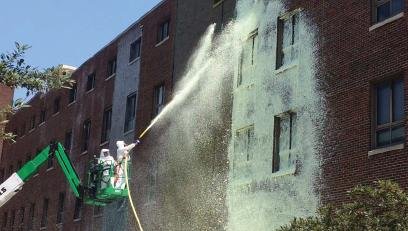
Resources: Full scale demonstration of technologies
The US EPA, DHS, and DOE conducted the Wide Area Urban Radiological Containment, Mitigation, and Clean up Technology Demonstration at Battelle in Columbus, Ohio in June 2016. This highly successful event provided first responders with options for response to a wide area radiological incident, such as a dirty bomb explosion or a nuclear accident, by showing the responders the operation feasibility of the tools in real time while the end users deployed the technologies.
Five radiological decontamination technologies (including strippable coatings, gels and chemical foam) were demonstrated on an urban building. Decontamination technologies were applied to remove contaminants from the building’s surfaces by physical and chemical methods. In addition, vehicle wash technologies as well as several approaches to contain wash water and radioactive particles were demonstrated. “Radiological contaminant mitigation” technologies are measures taken to reduce adverse impacts of radiological contamination on people and the environment, and to facilitate restoration of first responder services and critical infrastructure. Radiological contaminant mitigation technologies are designed for containing and removing radiological contamination on the surface in the first hours or days following a radiological event. Such technologies include “radiological particle containment,” which is designed to prevent the spread of particles that might result from vehicle or foot traffic. Radiological particle containment technologies are applicable for early phase response to contain the radionuclides and to reduce radiation dose to responders and the public.
Radiological contaminant mitigation also includes “gross decontamination,” which is performed with the goal of reducing contamination levels. This reduction may not meet final cleanup levels but may be useful to mitigate some public hazard or to contain contamination.
While no live rad agents were employed in this demo, critical operational insight was gained by the response community. This event continues the applied rad cleanup research conducted by EPA at bench and pilot scales over the last several years. In attendance were senior officials from the Department of Homeland Security, Ohio EPA, Columbus City Council, Battelle Memorial Institute, first responders from the U.S. and Canada, EPA responders, technology vendors, representatives from FEMA, New York City, the Navajo Nation, the United Kingdom, EPA researchers, and many others.
Watch the video: Toolbox of Technologies.
Read the final report: Demonstration of Wide Area Radiological Decontamination and Mitigation Technologies for Building Structures and Vehicles
Anthrax Contaminated Subway Cleanup
Partners: California, New York, Virginia, Massachusetts, District of Columbia
Challenge: Cleanup of an anthrax contaminated subway
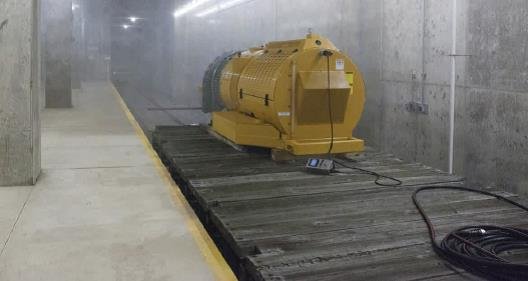
Resources: Full scale demonstration of technologies
Following the 2001 anthrax attacks, cleanup of the Hart Senate Office Building and Brentwood postal facility cost in excess of $1 billion, and resulted in the Brentwood postal facility being closed for over two years. Since that time, EPA has done a great deal of work to improve the nation’s ability to cleanup buildings contaminated with anthrax or other biological agents. In recognition of the complexities that would be involved, and the number of cities that have underground rail system, EPA along with Department of Homeland Security, Department of Defense and several national laboratories turned their attention to the cleanup of subway systems contaminated with anthrax.
The Underground Transportation Restoration (UTR) Operational Technology Demonstration (OTD) was conducted at Fort A.P. Hill’s Asymmetric Warfare Training Center (AWTC) to evaluate decontamination technologies that could be used in the event of an anthrax incident in a subway system. The project used a non-pathogenic surrogate that behaves much like anthrax spores in terms of how it is transported in the air, settles and how it can be killed.
The project consisted of two rounds of rounds of background sampling, agent release, decontamination, sampling, waste removal and decontamination, and post-decontamination sampling. The technologies that were evaluated included a fogger that produced a fog from diluted bleach and skid mounted sprayer that sprayed a liquid pH adjusted bleach solution. Both technologies were selected because they are off-the-shelf and could easily be purchased in an emergency.
In 2018, EPA published a report that thoroughly analyzed each step of the cleanup process (gathering of samples, cleanup methods, waste management) as well as cost associated with each. The results of this study concluded that there was no significant difference between the two cleanup methods. Utilizing approaches that reduce cost, such as composite sampling which decreases the need for labor and supplies, data management, sample shipment, and laboratory analysis, could make cleanup more manageable. The study noted that waste management is an integral piece of the cleanup process and should be determined both during pre-incident and response planning due to its impact on cost and logistics. This information was provided to DHS which has developed site-specific plans for San Francisco and New York as well as guidance that could be used in other cities.
Read the final report: Underground Transport Restoration Operational Technology Demonstration.
Watch this video on the Underground Transportation Restoration Project.
Transit Railcar Decontamination Test
Partners: City of San Francisco, California
Challenge: Testing the Decontamination of a Bay Area Rapid Transit (BART) railcar contaminated with a non-pathogenic anthrax surrogate
Resources: Advisement and Field Support
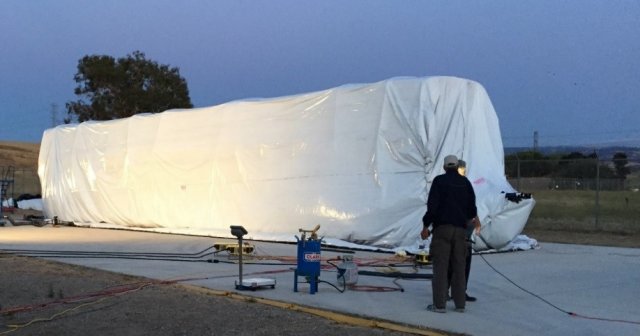
Release of biothreat agents, such as Bacillus anthracis spores, by terrorists into an underground subway system could have devastating impacts on human health and the functioning of cities such as New York, Chicago, Washington, DC, and San Francisco. This critical transportation infrastructure could be down for weeks or months during the cleanup; in addition, the spores are likely to travel to street level, further increasing risk of exposure and the economy.
As part of the Department of Homeland Security’s (DHS) Underground Transport Restoration (UTR) project, several federal agencies conducted a scientific study to evaluate methyl bromide (MB) as a fumigant for decontaminating subway railcars contaminated with Bacillus anthracis (Ba) using Ba Sterne strain spores. In conjunction with the DHS, EPA, Sandia National Laboratories (Sandia), and Lawrence Livermore National Laboratory (LLNL) participated in the fumigation of a subway railcar using MB in July 2015. The study was conducted to gain large-scale information on the use of MB for the decontamination of Ba spores and to develop site-specific plans and guidance that could be modified and used during a real-world incident. The fumigant MB was selected because it has shown to be effective in the inactivation of Ba spores during laboratory testing, is less corrosive than most other fumigants, and can be captured on activated carbon.
At the conclusion of the 36-hour fumigation period, the railcar was aerated and samples were collected and sent for analysis. Results showed that none of the 40 fiberglass or 40 aluminum test samples contained viable spores after fumigation. Out of the 40 samples of each of the following materials analyzed, the following numbers of samples were positive after fumigation: 2 nylon carpet samples, 1 rubber flooring sample, 1 Mylar® sample, and 8 vinyl seating samples. Samples removed from the fumigation envelope at 6, 12, 18, and 24 hours after the start of fumigation contained viable spores on some of the samples from all materials.
Given these results, EPA recommends a Bacillus anthracis contaminated rail car be fumigated with methyl bromide for a full 48 hour to ensure complete inactivation of the bacteria.
Read the final report: Decontamination of Subway Railcar and Related Materials Contaminated with Bacillus anthracis Spores via the Fogging of Peracetic Acid and Aqueous Hydrogen Peroxide.
Ebola Decontamination and Waste Management Support
Partners: New York, Maryland, Texas
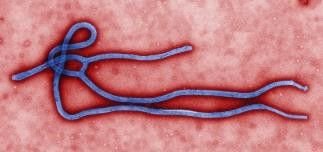
Challenge: Decontamination of materials and management of waste and wastewater contaminated with the Ebola virus.
Resources: Advisement on decontamination and waste management
EPA supported states and regions responding to the 2014 outbreak of Ebola in the United States. EPA researchers were called upon to provide technical support related to decontamination products and best ways to use them, recommending the best decontamination methods for Person Protective Equipment, which was important to health care workers and others who came into contact with Ebola patients. EPA also provided instruction on how waste contaminated with the Ebola virus should be managed and the fate of the virus in wastewater.
In addition, EPA ORD participated in a workshop with the Maryland Department of Health and Mental Hygiene and contributed to the National Security Council’s development of the Multi-Agency Interim Guidance on Management of Wastes containing Category A Infectious Agents, such as Ebola. With EPA technical support and assistance, Maryland and New York were in a better position to address the challenges associated with managing waste from the Ebola crisis.
In November 2019 the Maryland Department of Health’s Environmental Health Bureau released the report from the 2017 Workshop on "Managing Highly Pathogenic Medical Waste: Finding a Way Forward" in which ORD participated. The report, which highlights some of the challenges and opportunities for Maryland in addressing Category A infectious waste, will be particularly relevant for those interested in preparing for the possibility of highly pathogenic emerging infectious diseases in the hospital or community setting.
Access the report on the Maryland Department of Health's Special Medical Waste page.
Sampling Operations Following Biological Incidents
Partners: New York City
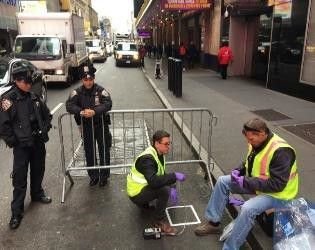
Challenge: The ability to effectively identify and map contaminated areas following a large biological incident within a highly urbanized area in the U.S.
Resource: Technical assistance to evaluate the compatibility of current surface sampling options and analytical methods for Bacillus anthracis in an urban environment.
EPA researchers have worked collaboratively with NYC Department of Health and Mental Hygiene (DOHMH) and NYC Transit to answer key gaps in capabilities to conduct effective sampling operations following a large biological incident within a highly urbanized area. EPA researchers, in collaboration with these partners, evaluated the compatibility of current surface sampling options, when applied to urbanized outdoor or underground (subway) surfaces, with current analytical methods for Bacillus anthracis. EPA researchers and NYC DOHMHC have also worked collaboratively to determine the potential utility of “Native Air Sampling” approaches, and their compatibility with analysis methods.
Because of this federal-local partnership, NYC personnel actively participate in project update teleconference meetings and provide critical input into the project’s directions. In this way, NYC has access to research outcomes as they develop, and NYC has ensured that the project meets the city’s emergency response needs. Ultimately, the project has resulted in an enhanced ability to conduct sampling and analysis operations for a large urban area following a Bacillus anthracis contamination incident.
Transportable Gasifier Technology for Disposal of Contaminated Animal Carcasses
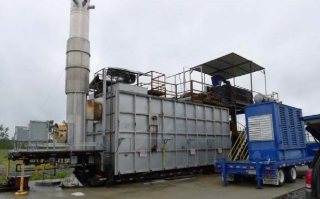
Partners: State of North Carolina
Challenge: Disposal of contaminated animal carcasses following an agricultural emergency
Resource: A prototype transportable gasifier technology for on-farm disposal of animal carcasses
Agricultural emergencies, such as foreign animal disease outbreaks, could result in the need to dispose of many contaminated animal carcasses. The environmental impacts of carcass disposal are site-specific. Some technologies (e.g., burial) are not viable in areas with a high-water table, such as North Carolina. Multiple disposal options are necessary. Gasification has the potential to be a technology for on-farm use, which reduces risk associated with transporting the carcasses to an off-site location (e.g., landfill, incinerator). It also has the potential to generate energy at agricultural sites during non-emergency times, and burns more cleanly thus requiring less pollution control equipment than conventional incineration.
As part of an interagency effort involving several federal agencies and the state of North Carolina, EPA built a prototype transportable gasifier intended to process 25 tons per day of carcasses (scalable to 200 tons per day) for on-farm disposal of animal carcasses. A demonstration was conducted to determine the feasibility of gasification for carcass disposal and to identify technical challenges and improvements to simplify and improve the gasifier as a mobile response tool. Past testing of the prototype demonstrated partial success, in that the transportability and rapid deployment requirements were met; however, the throughput of animal carcasses was approximately one-third of the intended capacity.
Significant modifications were made to various gasifier components, including the burner system, feed system, control system, power distribution and ash handling system, in order to increase its operating capacity to the rated design throughput. In September 2015, a series of tests were performed to evaluate the effectiveness of the design modifications at increasing the system’s throughput, as well as to demonstrate the unit’s ability to operate around the clock for an extended period of time. While the ash removal system and the system to move material across the bed failed during the tests, the new burner, feed, control and power distribution systems all functioned in an acceptable manner. The test and evaluation showed that improved alloys would be needed in some of the parts to achieve the desired results. EPA ORD’s support has helped the NCDA&CS focus on which areas of the system require repair and additional modifications to achieve overall design goals.
Response to Ricin Contamination
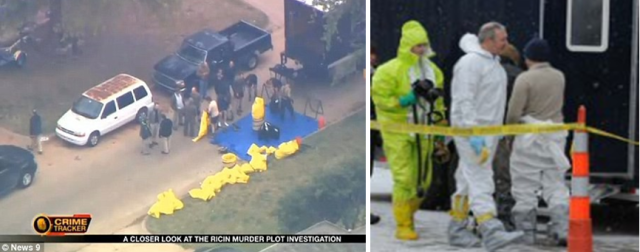
Partners: Colorado, District of Columbia, Mississippi, Oklahoma, Tennessee, Vermont and Wisconsin
Challenge: Enabling state and local communities to rapidly respond to ricin contamination
Resource: Technical assistance to aid field and laboratory approaches for sampling and analysis, operationally applying decontamination methods, and strategically handling wastes.
Ricin is a deadly biological toxin that is easily produced from castor beans, making it one of the most worrisome biological threat agents. Multiple ricin incidents occurred following episodes in the popular television show “Breaking Bad” that featured its production. EPA researchers and subject matter experts from the CBRNE Consequence Management Advisory Division in EPA’s Office of Land and Emergency Management/Office of Emergency Management were called upon by EPA Regions 1, 3, 4, 5, 6 and 8 to support various state and local communities during independent ricin incidents spanning several years (2013 to 2019). EPA researchers developed innovative applied solutions to the challenges encountered during the first ricin responses leading to significantly shortened response times and decreased costs and resources required for the subsequent ricin incidents. The developed tools provide the federal government with important new capabilities for helping states and local communities respond to ricin incidents.
As one recent example, EPA researchers rapidly supported EPA Region 8’s (Mountains and Plains) response to a ricin incident at a condominium in Boulder, Colorado. The applied solutions directly informed the sampling plan, sample analysis, decontaminant selection, decontamination of responders and their equipment, and handling of the ricin waste. Because the laboratory used EPA's recently developed sample processing (sample cleanup and concentration) method, some post- decontamination samples indicated that ricin was still present in the condominium; these method removed analytics interferences and, thereby, increased the capability to detect ricin in environmental samples. This information enabled state decision makers to determine that further decontamination of the unit was required to protect public health. Without this research, the condominium could have been declared clean and safe for re-occupancy when in fact ricin would have remained.
These efforts enabled the states and local communities to rapidly respond to ricin contamination incidents and effectively clean up the affected areas. EPA researchers helped close scientific gaps, transition scientific solutions, and enabled the states and local communities to be ready to rapidly respond to the next ricin or other biotoxin incident.
Read the journal article: Sample Processing Approach for Detection of Ricin in Surface Samples (2017).
